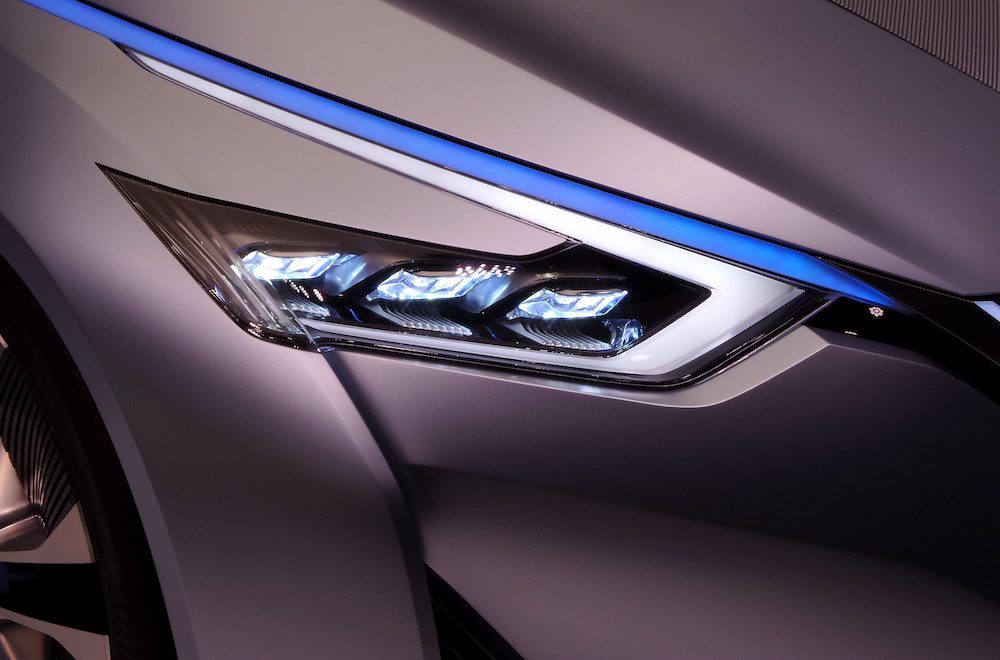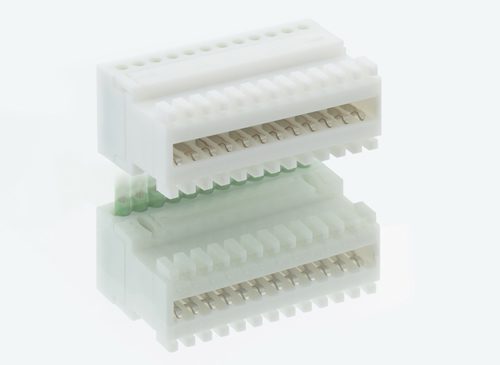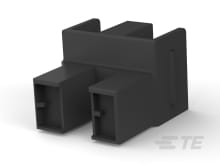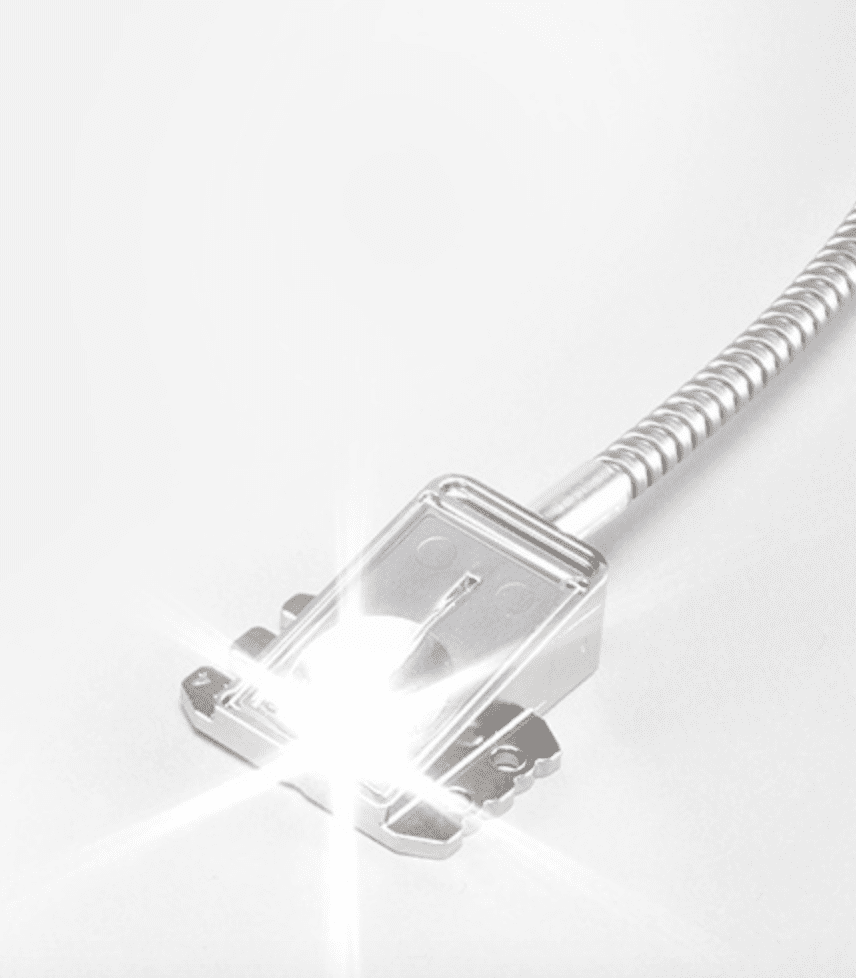Light and Motion: New Automotive LED Technologies Take to the Roads
Advances in automotive lighting like laser-powered and adaptive headlights technologies, OLED panels, and micro-LEDs are lighting up the automotive world with the help of miniaturized interconnects.

While transformative innovations like automation and electrification are drawing the most attention in the automotive industry, new automotive lighting technologies are also making a difference in vehicle design and the driving experience. Advancements in LEDs and the ongoing miniaturization of the interconnects behind them are leading to the design of smart, efficient, and impactful new illumination schemes on the inside and outside of cars.
Since the mid-2000s, automakers have widely implemented cool, energy-efficient LED technologies throughout vehicles. LEDs (light emitting diodes) have now almost completely overtaken incandescent, halogen, and xenon bulbs and enable brighter headlights, taillights, and running lights that use less energy and generate less heat. They are also used in screens, signals, interior displays, instrumentation lights, daytime running lights, and cabin lighting. LEDs offer new automotive lighting possibilities that bring functionality and flair; you’ve likely followed a car with LEDs encircling a spare tire or outlining styling details in a distinctive way that provides both visibility and a bit of flash. LEDs are easy to link together in attractive circuit designs, respond instantly to system commands, and draw very little power, enabling generous use of them in car designs.
The latest vehicle models combine LED technologies with sensors to read environmental conditions and driver’s cues to activate a new generation of connected vehicle lighting technologies. These new automotive lighting technologies are changing the way cars “see” the road. A variety of interconnects are used to transmit power and signal between different components in automotive lighting technologies.

Lumberg RAST 1.5 connectors feature a space-saving miniaturized design that is ideal for use in new automotive lighting technologies.
Adaptive lighting This smart technology measures ambient light and weather conditions and automatically adjusts lighting to the ideal intensity level. Adaptive front lighting (AFS) uses adaptive technology to calibrate headlights for safety and visibility for drivers and other vehicles on the road. For example, high beam assist (HBA) technology automatically switches between high beam and low beam lights when oncoming traffic is detected.

TE Connectivity’s headlight housing is designed to withstand harsh automotive environments. This two-position crimp terminal receptacle is suitable for use in adaptive bend lighting systems that require precise control of the headlight beam pattern.
Dynamic bend lighting By combining automation with intelligent headlight technology, dynamic bend lighting physically turns the headlights in the anticipated direction of the driver’s route. This allows drivers to see around corners a few seconds before the vehicle is pointed down that path.

KYOCERA AVX’s LaserLight Fiber is the world’s first white light, high luminance, remotely delivered laser light module. This high precision, ultra-compact, illumination product delivers more than 100 times the luminance of LEDs and can be precisely shaped to reduce glare for other drivers.
Laser-based light modules This headlight technology uses lasers to create a more focused and intense beam of light. The laser-based modules use blue light diodes that emit light at a wavelength of around 50 nanometers. This light is converted into white light that uses a phosphor material that is activated by the laser.
Intelligent lighting technologies The same types of connected technologies that control lighting in smart buildings are moving into automotive designs. These systems use sensors and algorithms to anticipate the lighting needs of drivers and passengers based on road, daylight, and weather conditions; cabin occupancy; and the use of various other new automotive technologies by people inside the vehicle.
To learn more about the companies mentioned in this article, visit the Preferred Supplier pages for KYOCERA AVX, Lumberg, and TE Connectivity.
Like this article? Check out our other articles on Miniaturization and Innovation, our Automotive Market Page, and our 2023 and 2022 Article Archive.
Subscribe to our weekly e-newsletters, follow us on LinkedIn, Twitter, and Facebook, and check out our eBook archives for more applicable, expert-informed connectivity content.
- Meet the Connector: DIN Standard Connectors - April 16, 2024
- Software-Driven Radio Reinvigorates Old Technology - April 9, 2024
- What is a Busbar? - April 2, 2024





